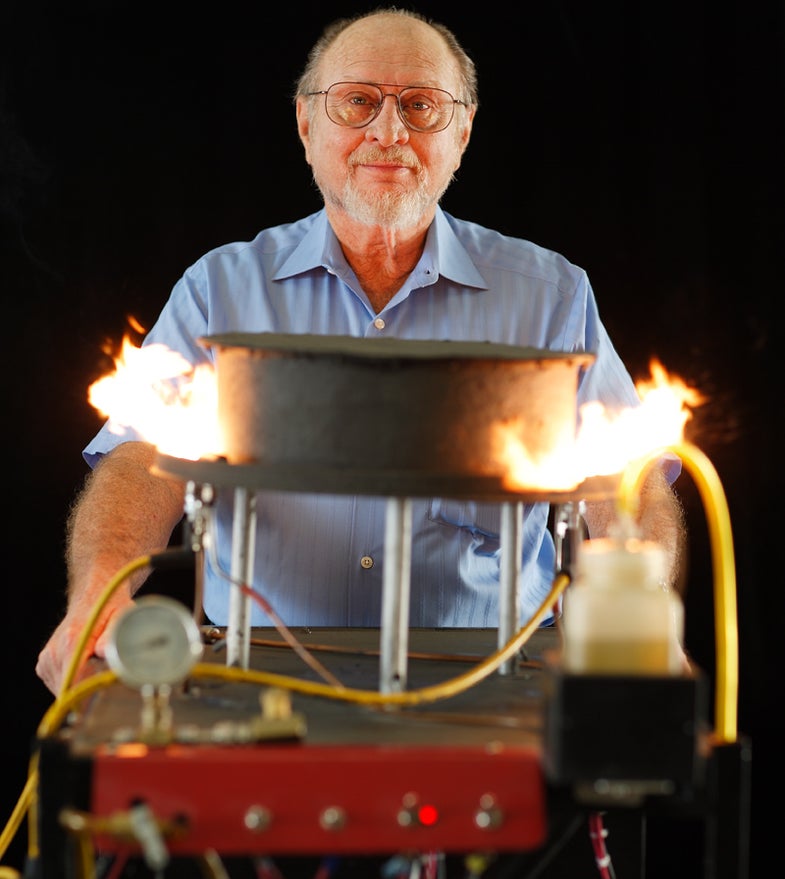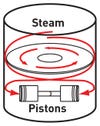Steam Under the Hood
Harry Schoell's engine uses superhot steam to make a cleaner, more efficient car. With video of the inventor demonstrating the engine

The Cyclone
Cost to Develop: $2 million
Time: 8 years
Prototype | | | | | Product
As long as the internal combustion engine has been around, garage tinkerers have been trying—in vain—to best it. But Florida boat engineer Harry Schoell, a lifelong inventor with a portfolio of patents, thinks he’s got the answer, in the form of a reinvented steam engine.

How the Cyclone Works
“Internal combustion is dirty and complicated,” Schoell says. Steam engines, on the other hand, are simpler and more efficient and can use a variety of fuels. Unlike a regular internal combustion engine, which explodes a mixture of fuel and air hundreds of times a second inside its cylinders to drive the pistons, steam engines burn fuel continuously in a different chamber. And since this combustion is separate from the engine’s moving parts, any fuel that gets steam hot enough to drive the engine’s pistons will do.
But steam engines small enough to fit in a car don’t typically produce enough energy to drive it. Schoell’s design, called the Cyclone Green Revolution Engine, gets more power from the steam by making it so hot that it turns “supercritical,” a stage at which it behaves more like a liquid and expands far more than gaseous steam.
Although it can scale up or down, Schoell’s prototype is roughly the shape and size of a backyard grill’s propane canister. Inside a doughnut-shaped combustion chamber at the top, fuel—be it biodiesel, ethanol or gasoline—combusts with air continuously to create a 2,000°F tornado (hence “Cyclone”). Steam circulates around a heat exchanger until it reaches 1,200°F and then pipes into the engine’s cylinders to drive the pistons. As the steam cools, it’s recycled back into the system and reheated.
By zealously reusing every possible bit of heat, steam engines can convert up to 46 percent of incoming energy into torque. Most gas-powered internal combustion engines, in contrast, are only about 25 percent efficient. Schoell’s prototype also emits much cleaner exhaust than a standard gas engine; unburned fuel sits in the combustion chamber until the engine fires up again, and eventually nearly all the waste particles and unused fuel are incinerated.
Schoell’s company, Cyclone Power Technologies, has recently signed a deal to develop a Cyclone for lawn mowers and other garden equipment. And unlike most garage tinkerers, Schoell has even won the respect of the pros: In 2006, he won the Distinguished Automotive Engineering Award from the Society of Automotive Engineers for the Cyclone’s design.
More Invention Awards:
- The zero-emissions moto-unicycle
- A multi-rotor wind turbine
- A lifesaving beacon for miners
- The sewage-proof diving suit
- A more natural artificial foot
- The living air filter
- The rocket engine for the masses
- A homebuilt tumor-killer
- The better bridge beam